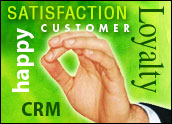
Throughout the economic downtown, business managers heard virtually every cost-cutting measure, from furlough days to reducing IT investment. As we see shoots of recovery, we are reminded that no company can cost-cut its way to excellence; without some focus on the customer, eventually service starts to dwindle, products are shoddy and the company is no longer competitive. Those that persevere through both economic booms and busts incorporate a long-term view of quality and cost measures into their strategic business functions.
As we move toward the post-recession economy, the new consumer norm is frugality. When the economy gets going again, Americans are expected to continue their more moderate spending habits. One study by AlixPartners concluded Americans will spend at about 86 percent of their pre-downturn levels. What’s important to consumers today is spending wisely, shopping for high-quality products and services, and resisting temptations to splurge at the check-out line.
This frugal mindset extends beyond consumers and into business markets. Corporations are examining their strategic investments and weighing them against the bottom-line benefit of making additional cuts. Return on investment (ROI) must be more than an uncertain proposition discussed in a PowerPoint, but instead a tangible deliverable; otherwise, it’s unlikely most companies will fund the new endeavor.
An Outside View
These two market dynamics — that consumer spending will be more closely tied to quality and value, and that corporations are still cost-containing and reluctant to make risky investments — lead us to an interesting tension in business. How can companies deliver the kind of quality and value cost-conscious consumers want, while maintaining a laser focus on their financial results?
The answer lies in quality assessment that determines the balancing point between “sufficient customer service” and the costs to provide that service. Third-party quality evaluating and monitoring programs take an objective look at a company’s array of customer touchpoints, such as sales, support, and customer service. Through this independent analysis, it’s possible to determine precisely how well the company is meeting customers’ expectations viewed through the lens of the company’s own ideas and budget for quality.
Most importantly, an experienced quality assessment company will work with the client company to establish hard metrics around each aspect of the customer experience for a meaningful and measurable understanding of quality and cost. These precise metrics and analyses allow virtually any company to make investments in the right places that will deliver the highest return on customer satisfaction, ensuring that costs are controlled while consumers get the quality they expect.
Finding Common Ground
One example of how this works is in the highly competitive wireless phone industry. Every consumer has many cellphone choices, so customer service is a key dimension in both acquisition and retention. If a customer wants to change a wireless calling plan, a quality analysis will show that, to the customer, “a good service experience” means that the customer service agent will suggest the calling plan that offers the most minutes at the lowest price, rather than forcing the customer to ask for a certain calling plan.
If the customer feels like they had to prod the agent to give the best value, they will likely categorize the experience as poor quality, lowering customer satisfaction scores, and more importantly, encouraging them to shop the competition.
An effective quality control program will identify this common scenario as a potential customer satisfaction hurdle and enable the company to make cheap, easy adjustments to the agents’ scripts so that customers are automatically offered the best-value calling plan.
This is a prototypical example of how quality analysis works: It identifies drivers in customer perceptions and customer service agent behavior and finds the common ground for a positive and profitable customer experience. It’s important to note that adjustments to the customer service agent’s scripts and policies may cost the company relatively little, yet they often play an enormous role in driving customer satisfaction. Simple and effective changes such as this can lead to dramatically improved customer satisfaction scores, which directly ties to revenue and retention.
Quality is not about going broke to make every customer’s dream come true. Instead, quality assurance helps find the balance between cost of delivery and of good service. An effective program will understand key drivers of customer satisfaction and the relationship of those drivers to measures of quality in a contact flow. It will also provide key information to cost-effectively manage the design of the customer experience. An effective quality initiative will not only tell a company what it has to do to improve quality scores, but also what it doesn’t have to do.
Tracking Over Time
An additional example: A catalog retailer may decide to offer free shipping, assuming customers will find this benefit part of the overall experience. However, a metric-oriented quality assessment may determine that, in fact, customer satisfaction scores — and revenue — are unmoved by the free shipping promotion, and instead customer satisfaction scores respond more favorably to the company’s “no questions asked” return policy. The investment in quality monitoring enabled the retailer to recover the significant cost of shipping while targeting policies that drive customer satisfaction.
What’s more, with a well-managed quality program, the seller can track customer perception over time via software tools for customer satisfaction and agent-level service delivery performance. If customers show measureable signs of dissatisfaction due to shipping costs, it will be clear in the trending analysis provided by the quality firm.
In today’s business climate, customers are scrutinizing every company they spend money with for value, customer service and quality. As managers, it is our job to grow our companies, even amid difficult times. Therefore, it is critical that we find that sweet spot between customer satisfaction and affordability that will drive customer loyalty — and top-line growth — in the new economy.
Chris Coles is CEO of HyperQuality.















































